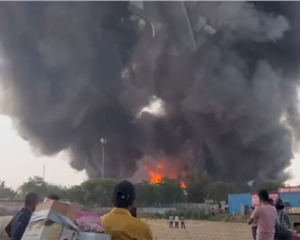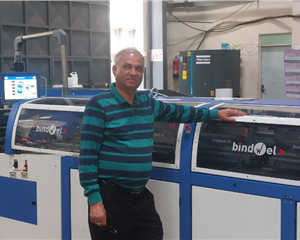In 1995, watching a movie in any of the theatres in Kochi and other big cities in Kerala was a big deal. It involved process of finding the show timings, many a times the risk of see a houseful board after waiting for hours in long queue for the tickets. Today it’s different. One can buy tickets online, find different movies on sites, get instant reviews.
“That's the power of digital technology,” says Mahesh Karthik S, production executive and director of ST Reddiar & Sons, the print company that was established in 1886.
“In 2006, when I joined ST Reddiar & Sons, as its director, we operated with analogue plates and a label of being “quantity” printers. That all changed after the company transitioned to digital technology, bringing in CTP systems in-house. “The print industry is a performance-driven industry, and the reputation of a printer is built on the type of work he outputs. We produced a lot, but did not match up to the quality and consistency, that required us to be labelled as quality printers,” he says. Today that tag has been replaced with “quantity and quality”. The company has brought in digital technology in much of the sphere of its operation, be it press or pre-press. “As a result, we have grown twice the size we were in 2006,” he says.
In Kerala, the CTP technology choice is primarily between thermal and violet exposure technologies and since 2006, Kerala has seen 49 CTP system installations. The print capital of Kerala, Kochi has 20 of these.
In terms of plate consumptions, the entire state of Kerala fires around 30,000 CTP plates per month of which 17,000 alone are in Kochi.
This growth in CTP systems and plates is driven by the print market in Kerala, which is shorter in orders. These ranges from 1,000 to 10,000 copies be it magazines or commercial print jobs.
PrintWeek India spoke to a host of such printers in Kochi from Maya Printer to ST Radiar in Kochi have at least one CTP systems if not two. There are five CTP bureaus in Kochi.
Varna Graphics for example has two Heidelberg Suprasetters and fires 250 plates per day. Varna, has three Heidelberg four-colour presses and produced 60 to 75 print jobs per day though it has the capacity to produce around 100 print jobs per day, claims KJ Thomas, managing director of the company.
Five Star Offset Printers, which prints magazine and commercial print jobs like booklets, brochures, bills, and vouchers etc. Sabu KP, managing partner of the printing company, says “During peak time, we touch 400 plates per day but it averages to around 300 plates per day.”
Rajan PS, managing partner of St Francis Press prints around 25 to 30 jobs per day and fires around 100 plates per day on his Kodak Trendsetter 80C CTP system. He says, “With short run jobs one has to maintain the quality and performance standards that CTPs provide.”
The other reason for the printers churning out such large number of digital printing plates is the increase in four-colour jobs. “Almost all the short-run jobs are four-colour jobs,” says Rajan.
From the break-up of CTP systems in Kerala – 13 Kodak Trendsetters, eight Heidelberg Suprasetters, 10 Screen platerites, 3 Fuji Luxuls, 11 TechNova supplied platesetter, 2 Agfa platesetters and one each from ECRM and Dotline, it can be said that the dominant technology in Kerala is thermal, which accounts for a major chunk of CTP plate consumption.
While it is proven that return on investment (ROI) on these units are more of less met or even exceeded, the printing fraternity in Kerala, are concerned about the effects that the anti-dumping duties have had and will have on Kerala’s print industry and are strongly objecting to the imposition of the anti-dumping duty.
Their argument is that Kerala’s physical infrastructural sectors are hardly encouraging and one of the reason why its print industry has struggled to register a robust growth. It may sound unbelievable, but Kerala posses 1.6 lakh km of roads. “How much of it is motorable,” questions O Venugopal, managing director Association of Anaswara and past-president of Kerala Master Printers. He says, “It’s only 20,000 kms. Kerala’s tourism is the only industry by far that can be said as emerged,”
He explains the type of jobs that are done in Kerala. “500-1000 copies print order is the average quantity of 80% of print jobs. Moreover these do not need quality print, but printers have to maintain quality for survival.”
According to Venugopal, it does not matter who is supplying the plates as long its quality is good and the sold at affordable prices in Kerala. “Unfortunately, the anti-dumping duty has upset the applecart of the smaller printers in Kerala. The cost of our print jobs have gone up; customers are unwilling to pay more as a result profit margins are under severe pressure,” he says.














 See All
See All